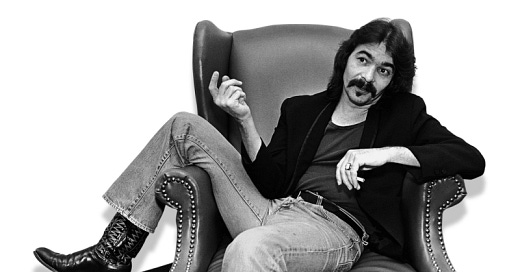Historically Important Cover Songs
Once in a while, the cover doesn’t just beat the original but actually becomes it.
I don’t like covers.
But whenever I say that, you start throwing a zillion examples at me of manifestly great covers, greater even than the originals, and the lists are of course endless: What about Hendrix’s “All Along the Watchtower,” Joplin’s “Bobby McGee,” etc., etc., etc.? . . . And the fact remains that except for a very few, I tend not to like anything on those lists, because they’re covers, and I don’t like covers.
Though of course I do like a few of them. They become the exceptions that prove the rule, which is:
I don’t like covers!
But this post isn’t about what any of us do or don’t like. It’s about a few covers that hold, I think, a special place in the history of recorded American popular song, which is a subject I sometimes like to explore here.
The two tracks I’m looking at today are by no means the only entries in this niche. Yet each has a quality that may throw an odd angle on what I’m trying to talk about. A cover’s being as good as or better than the original is a matter of preference. I’m trying to identify some cultural, musical, maybe historical, maybe mystical transformation that occurs in those few cases where a cover somehow creates something so totally new that the cover seems to become the original.
First, though. For the purposes of this exercise, what counts as a cover?
The original definition is a bit too strict for our purposes. “Covering a record” was once music-biz jargon for a pop artist’s recording a new version of a recording made by an artist in another genre, when the original recording was having commercial success in that genre: on the “race” chart (later and more politely known as rhythm and blues, or r&b); or on the “hillbilly” chart (later and more politely known as country and Western, or c&W). Certain non-pop songs clearly had enough audience-proven appeal, the thinking ran, that if mainstream pop singers delivered them in a mainstream pop style, they might have strong sales in the much bigger and far more lucrative pop market too.
So Tony Bennett covered Hank Williams’s c&W hit “Cold, Cold Heart,” for one example. Peggy Lee covered Little Willie John’s r&b hit “Fever,” for another. More singer-songwriting was going on in the smaller-market genres than in pop (Williams himself wrote “Cold, Cold Heart”), but that wasn’t the main issue (“Fever” was written by Otis Blackwell and Eddie Cooley), because you weren’t covering a song. You were covering a commercially well-performing record, meaning a single.
Non-pop recordings also did sometimes “cross over,” as they say, to pop. Ella Fitzgerald, Louis Armstrong, Cab Calloway, and Louis Jordan made singles that didn’t stay within the black-music category, supposedly so rigidly enforced, and rose high in the pop charts; the country artists Eddy Arnold, Red Foley, and Tex Ritter did too (Louis Jordan’s “G.I. Blues” even crossed over all the way: r&b to pop to country!). More often, though, if a song recorded by a country or r&b artist was heard on pop radio stations and showed up on the pop charts, it was being covered by a pop singer.
Royalties for the cover version went to the original songwriter (or, notoriously, didn’t) or to whoever held the copyright. The original recording’s singer didn’t get paid when the hit was covered by a pop singer—unless that singer also owned rights to the song—though it was really the recording that was being covered. It was a sharp business.
Since then, however, the idea of covering a song has loosened up. Now it seems to mean, roughly, any recording artist’s recording a song written by another recording artist who has also recorded the song.
That’s different from a recording artist’s recording a song by a songwriter who’s not a performer. We don’t say, for example, that Ella Fitzgerald is covering Rodgers & Hart when she does “My Funny Valentine,” but when she does “Can’t Buy Me Love,” we call it a Beatles cover. The Beatles, for their part, covered Chuck Berry, but they didn’t cover Meredith Willson, who wrote “Till There Was You”; they just did his song. These definitions clearly get slippery. Is Patsy Cline’s “Crazy” a Willie Nelson cover? I don’t think so, because she wasn’t covering Nelson’s record; he didn’t record the song until after her version became a country and crossover-pop hit. When he was still a workaday Nashville songwriter, his song was perfect for Cline, and she chose it. Same with Willie, “Hello, Walls,” and Faron Young.
But if somebody today does a version of “Blue Eyes Cryin’ in the Rain”—which Willie recorded but didn’t write—I’m going to have to say they‘re covering, to some degree, Willie’s hit single. But wasn’t that too that a cover? Yes: “Blue Eyes Cryin’ in the Rain” was written by Fred Rose and first recorded by the c&W star Roy Acuff, in 1947, and then by others.
So now—keeping none of that in mind!—let’s look at Bonnie Raitt’s recording of John Prine’s “Make Me an Angel.”



